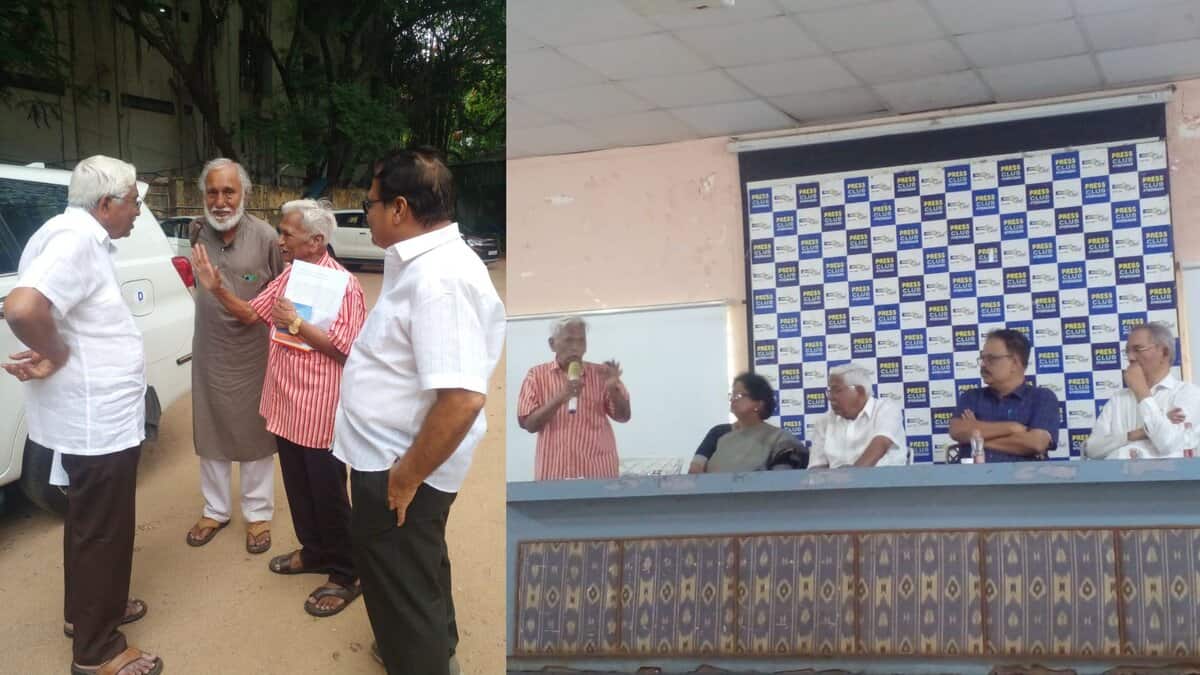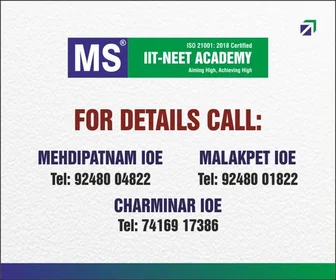
Hyderabad: Senior journalists and social activists came in support of establishing a tribal museum in the two professors’ quarters in Osmania University, leased by Adi Dhwani Trust, founded by retired professor Jayadheer Tirumala Rao.
Addressing the media at Somajiguda Press Club on Tuesday, June 3, they assured that the 6 mini-museums being setup in the quarters being renovated for the purpose, would not belong to any private party, and would be operated by the Union ministry of culture and tourism, the state government, and Adi Dhwani Trust.
He said there would be a committee formed with the Centre, state government and the university’s department, along with Adi Dhwani Trust’s representatives to operate the museum.
“From our understanding, those opposing the proposal may not be aware of the significance of the indigenous art forms coming up in the vicinity of the campus, which will be a pride for Telangana, India, and the Osmania University. We are hoping the students and professors will cooperate in this effort to create a unique museum with the rarest of the rare artefacts unseen and unheard of,” said K Srinivas, editor of Andhra Jyothi.
He said that the state government identifying the two abandoned professors quarters in Tarnaka, was due to the prerequisites set by the Union ministry of culture for giving recognition to the museum, among which accessibility to public transportation and in a location frequented by the public were prominent.
“To establish a museum, the union ministry of culture has set a requirement that it should either be housed in an own land, or in a leased land with long-lease. The approval for 30 years lease was given in the university’s executive council meeting last month,” he said.
He said that if all the prerequisites were met, there was scope for securing Rs 25 crore from the Union ministry for the museum’s development in the near future.
He pointed out that it was in fact BJP state president and Union coal and mines minister G Kishan Reddy, who had suggested linking the tribal museum with the Union ministry of culture when he held that portfolio.
He spoke about the work done by Jayadheer Tirumala Rao in researching the songs of Telangana armed struggle, academia, and in the collection of the artefacts of the indigenous tribes across the country for the past 50 years.
Srinivas noted that Tirumala Rao, who has preserved around 5,000 of his artefacts in his house and other places, had also exhibited them at a museum in France, where the museum wanted to preserve them for display, but he turned down that request.
Similarly, he said Tirumala Rao had also exhibited his artefacts at the Rashtrapati Bhavan in New Delhi, where the President Droupadi Murmu was so impressed by the collection, that she too had offered to preserve them.
“Tirumala Rao wanted to establish the museum in Telangana. His artefacts are scattered in different places now. How long should this be a nomadic museum,” he questioned.
Recalling how the Indo-American Library and the Institute of Public Enterprise (now in Shamirpet) were once housed inside the university campus, he said the museum-cum-research centre will only be an asset for the university, which will aid research in sociology, anthropology, literature and other fields of study.
“Professor Tirumala Rao, who is now aged 75, said that he may not be able to take care of all these artefacts for long. He said he could give a write-up and video recordings giving a description and history of those artefacts. These artefacts have a connection with the lives of Adivasis. They should help the world. They should be accessible to all. This museum should become the property of the society,” said Telangana Jana Samithi (TJS) convener and MLC Professor M Kodandaram.
“I still remember how he used to preserve the artefacts in the godown of Potti Sriramulu Telugu University while he was teaching there. He used to dust them and clean the rust accumulated on the metal artefacts. Some of his artefacts are in the Salar Jung Museum. While constantly being shifted here and there, they are getting spoiled. This felt like injustice,” said social activist Kondaveeti Satyavathi.
Sannidhanam Narasimha Sharma, a retired librarian-cum-researcher from Rajahmundry came all the way to support Tirumala Rao’s efforts.
“Many of us may not have even heard of Nagesam and Ramesam from Rajahmundry, who belonged to the era of the first freedom struggle, who had painted scrolls of Ramayana on cloth. Today their art is being displayed in a museum in France, and we are wondering how they ended up there,” Sharma exclaimed, asserting that such method should change and the artefacts of the country should be preserved in the museums locally.
“These days there are very few who work with a commitment. Nobody is doing anything without expecting any financial benefits. But Tirumala Rao doesn’t expect anything except the future generations to gain from the knowledge and research,” Sharma assured.
Senior editor K Ramachandra Murthy too felt that the Bharatiya Janata Party (BJP) and Rashtriya Swayamsevak Sangh (RSS) should be happy to welcome the setting up of tribal museum in Osmania University campus.
K Srinivas, who mentioned that Professor Jayadheer Tirumala Rao’s name was also proposed for being conferred the Padma Shri award by the state government last year, felt that the obstruction to the tribal museum was only being fueled by assumptions and rumours.


